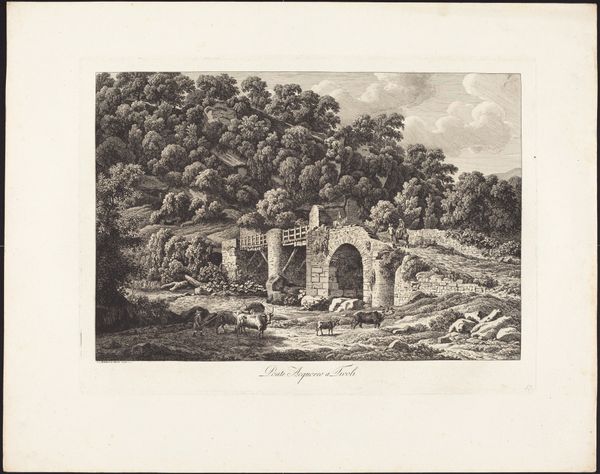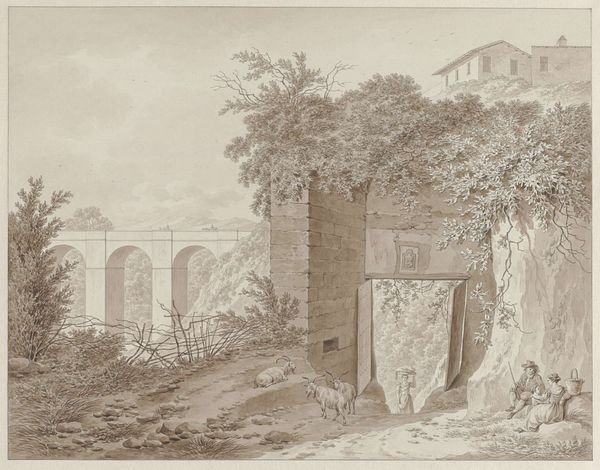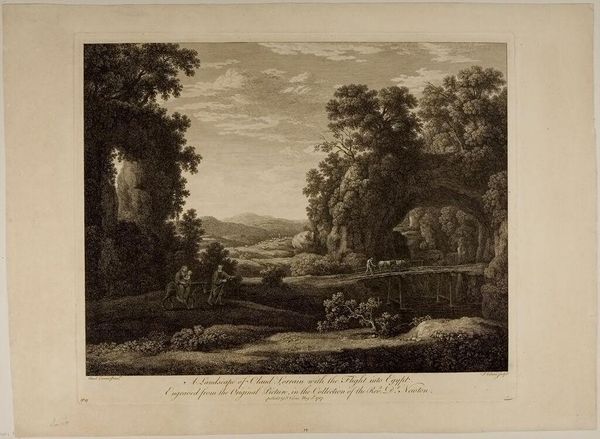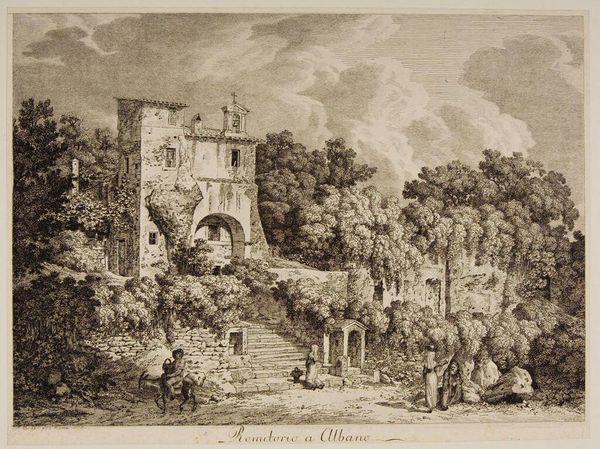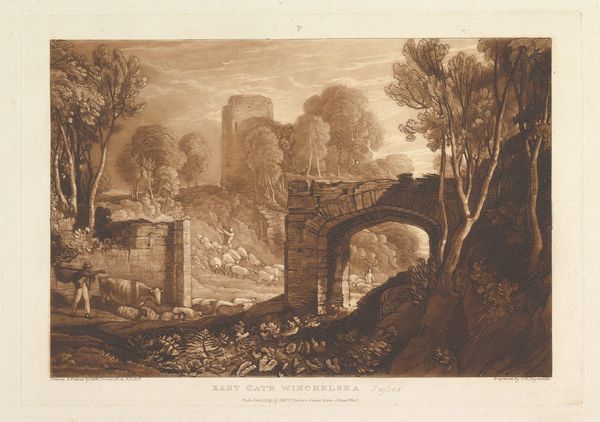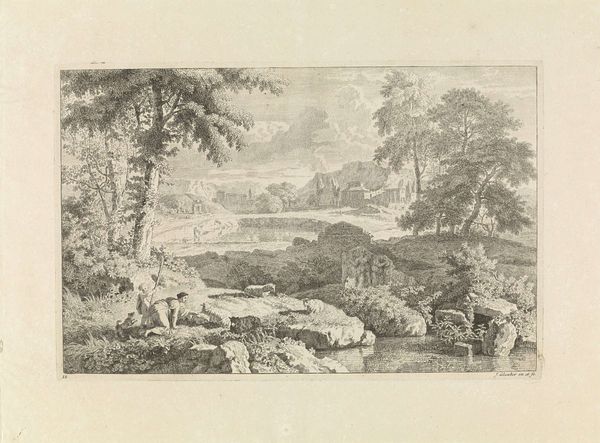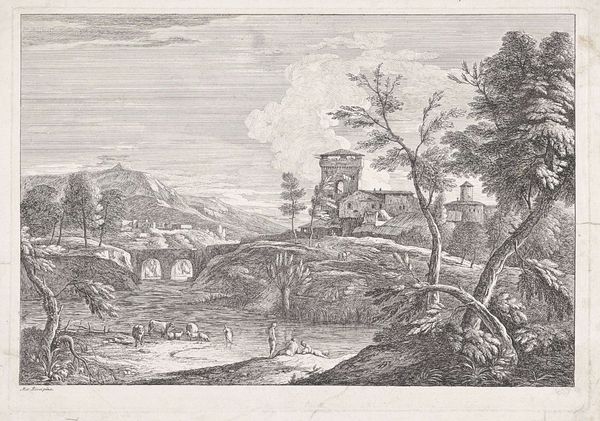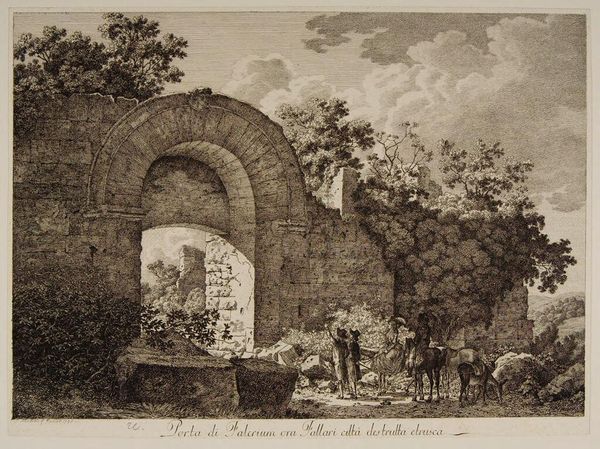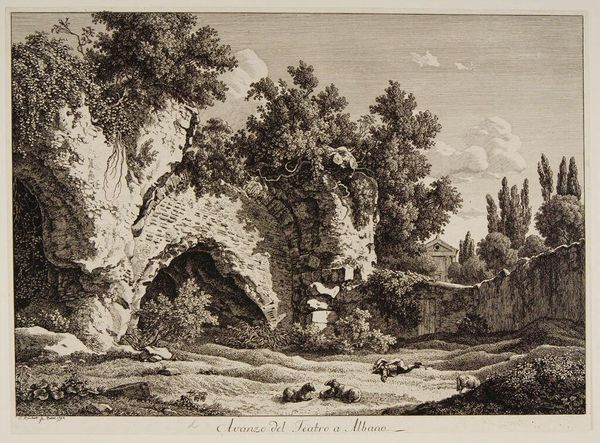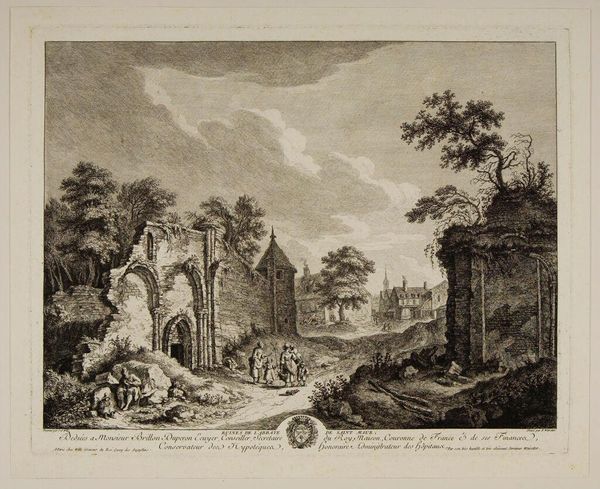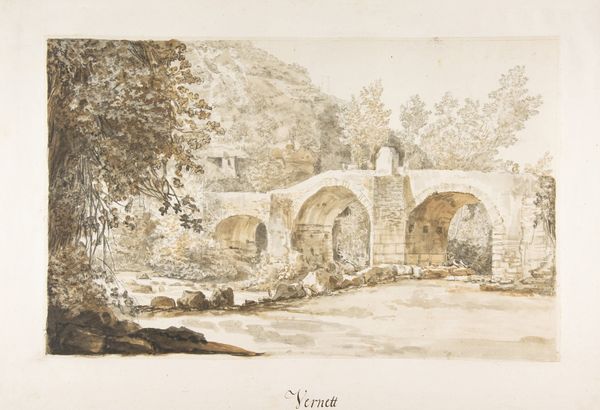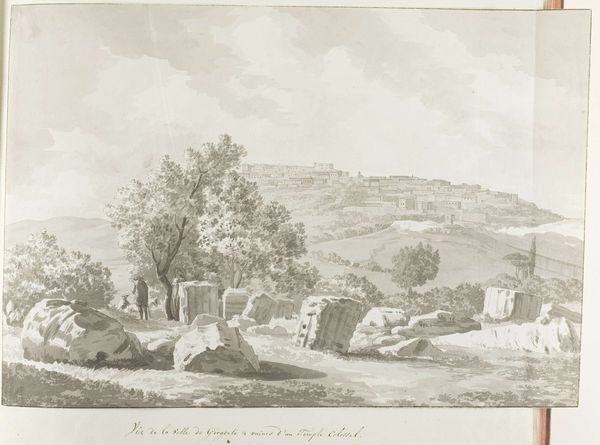
Copyright: CC0 1.0
Curator: This is Johann Christian Reinhart's "Ponte Acquoreo a Tivoli." Look closely at the printmaking technique. The precision and detail are astounding. Editor: Yes, the etching gives the scene a stark, almost theatrical quality. I'm struck by the bridge; it seems to connect realms, between nature and human construction. Curator: Absolutely. Reinhart, working in the late 18th, early 19th century, understood the market demanded picturesque views. This print likely served that taste, disseminating classical Italian landscapes. Editor: The aqueduct ruins also indicate the power of the past, both romanticizing it and reminding us of its material decay and how structures are meant to be circulated and consumed. Curator: True, the labor that went into producing both the original aqueduct, and then Reinhart's print of it, each speak to different kinds of social capital. One serving water, the other, artistic pleasure. Editor: I'm left wondering, who did this imagery serve, and what was the social function of circulating idealized landscapes like this? Curator: Fascinating questions to consider, particularly when we think about the consumption and distribution of landscape imagery then and now.
Comments
No comments
Be the first to comment and join the conversation on the ultimate creative platform.

